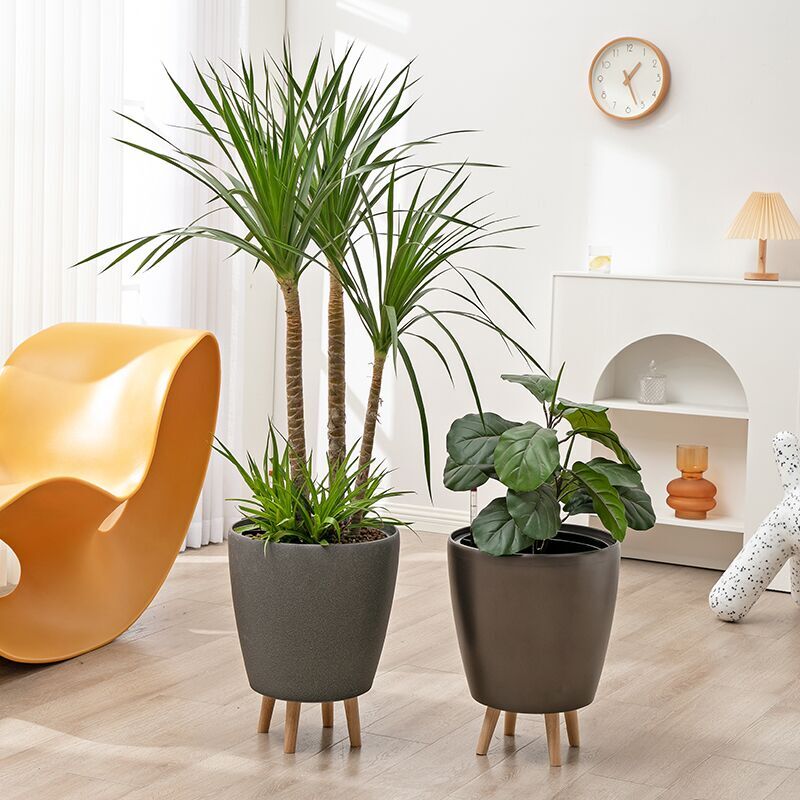Little 24 inch Diameter Planter Pots For Sale Maker in China
Little plant pots, often referred to as small or miniature plant pots, have gained popularity for their versatility and aesthetic appeal in both indoor and outdoor settings. These diminutive containers are designed to accommodate small plants, herbs, succulents, and even seedlings, offering several advantages over larger alternatives. Understanding their specifications and practical uses can help gardening enthusiasts make informed choices when selecting containers for their plants.
Specifications of Little Plant Pots
Little plant pots come in various sizes, typically ranging from 2 inches to 6 inches in diameter. The height can vary accordingly, but they are generally shallow, providing adequate space for roots while encouraging compact growth. Key specifications include:
Material: They are commonly made from materials such as plastic, ceramic, terracotta, or even biodegradable options like bamboo fiber or coconut coir. Each material offers different benefits in terms of durability, breathability, and aesthetics.
Drainage Holes: Good drainage is crucial for plant health, preventing waterlogging and root rot. Many little plant pots feature drainage holes at the bottom to ensure excess water can escape, maintaining soil moisture levels.
Shape and Design: While traditional shapes are cylindrical or square, contemporary designs include geometric shapes, hanging varieties, and decorative motifs. These designs cater to various stylistic preferences and practical needs, such as space-saving or compatibility with specific plant types.
Indoor vs. Outdoor Use: Depending on material and design, little plant pots are suitable for both indoor windowsills and outdoor garden settings. Outdoor pots may need to withstand weather conditions, while indoor pots may prioritize aesthetics and space efficiency.
Practical Uses of Little Plant Pots
Despite their small size, little plant pots offer numerous practical uses and benefits for gardeners and homeowners alike:
Indoor Decor: They are ideal for adding greenery to interior spaces, whether on desks, shelves, or countertops. Their compact size makes them suitable for apartments, offices, and other limited-space environments where larger planters may not be feasible.
Herb Gardens: Little pots are good for cultivating kitchen herbs such as basil, parsley, mint, and rosemary. Placing them near windows ensures they receive adequate sunlight, promoting healthy growth and convenient access for cooking.
Succulent Arrangements: Succulents thrive in small, well-draining pots due to their shallow root systems and low water requirements. Little pots allow for creative arrangements and displays, enhancing tabletops, mantels, or outdoor patios with their unique shapes and textures.
Propagation and Seedlings: Starting seeds or propagating cuttings is more manageable in smaller pots, providing a controlled environment for young plants to establish roots before transplanting. This process is crucial for maintaining plant health and ensuring successful growth transitions.
Gifts and Favors: Little plant pots make charming gifts for special occasions or as party favors. Personalizing them with decorative touches or planting them with meaningful plants adds a personal touch, making them memorable and eco-friendly gifts.
Maintenance Tips for Little Plant Pots
To Increase the longevity and health of plants in little pots, consider the following maintenance tips:
Watering: Monitor soil moisture levels regularly and water plants as needed, ensuring water reaches the roots without saturating the soil.
Light Requirements: Place pots in locations with appropriate light conditions suited to the specific plant species.
Fertilization: Supplement soil nutrients with a balanced fertilizer as recommended for the plants' growth stage and type.
Cleaning and Repotting: Periodically clean pots to remove mineral deposits or algae buildup. Repot plants as they outgrow their containers to prevent root binding.




 EN
EN  English
English 中文简体
中文简体 Español
Español























 Companies adhere to the "let plants fall in love with appropriate plant hall, let green into the tens of thousands of people for the purpose"
Companies adhere to the "let plants fall in love with appropriate plant hall, let green into the tens of thousands of people for the purpose" Fansan industry zone, Shabu Town, Huangyan, Taizhou City, Zhejiang province, China
Fansan industry zone, Shabu Town, Huangyan, Taizhou City, Zhejiang province, China +86-15325615991
+86-15325615991 +86-0576-81109093
+86-0576-81109093 +86-0576-81109093
+86-0576-81109093 yizhitang001@gmail.com
yizhitang001@gmail.com